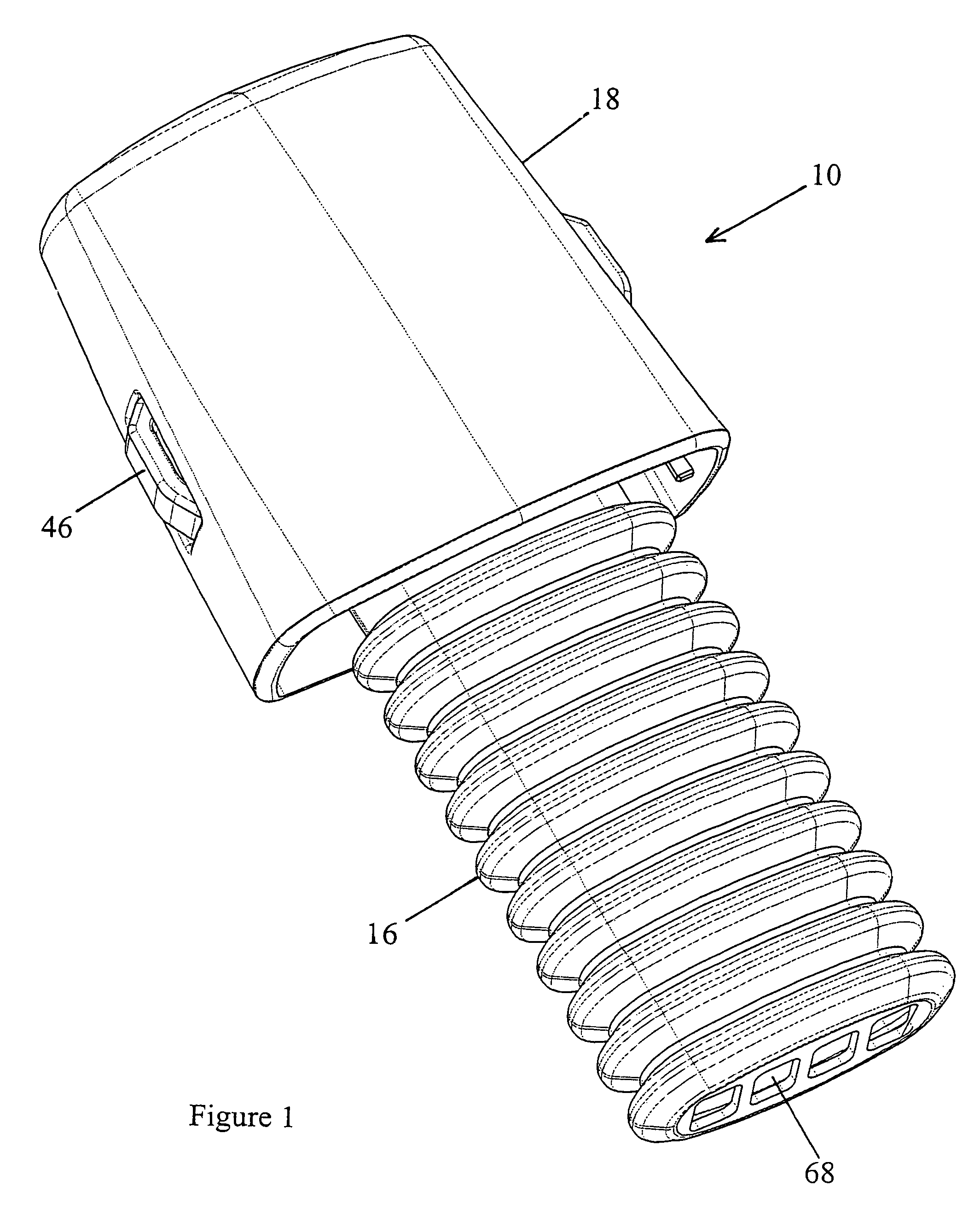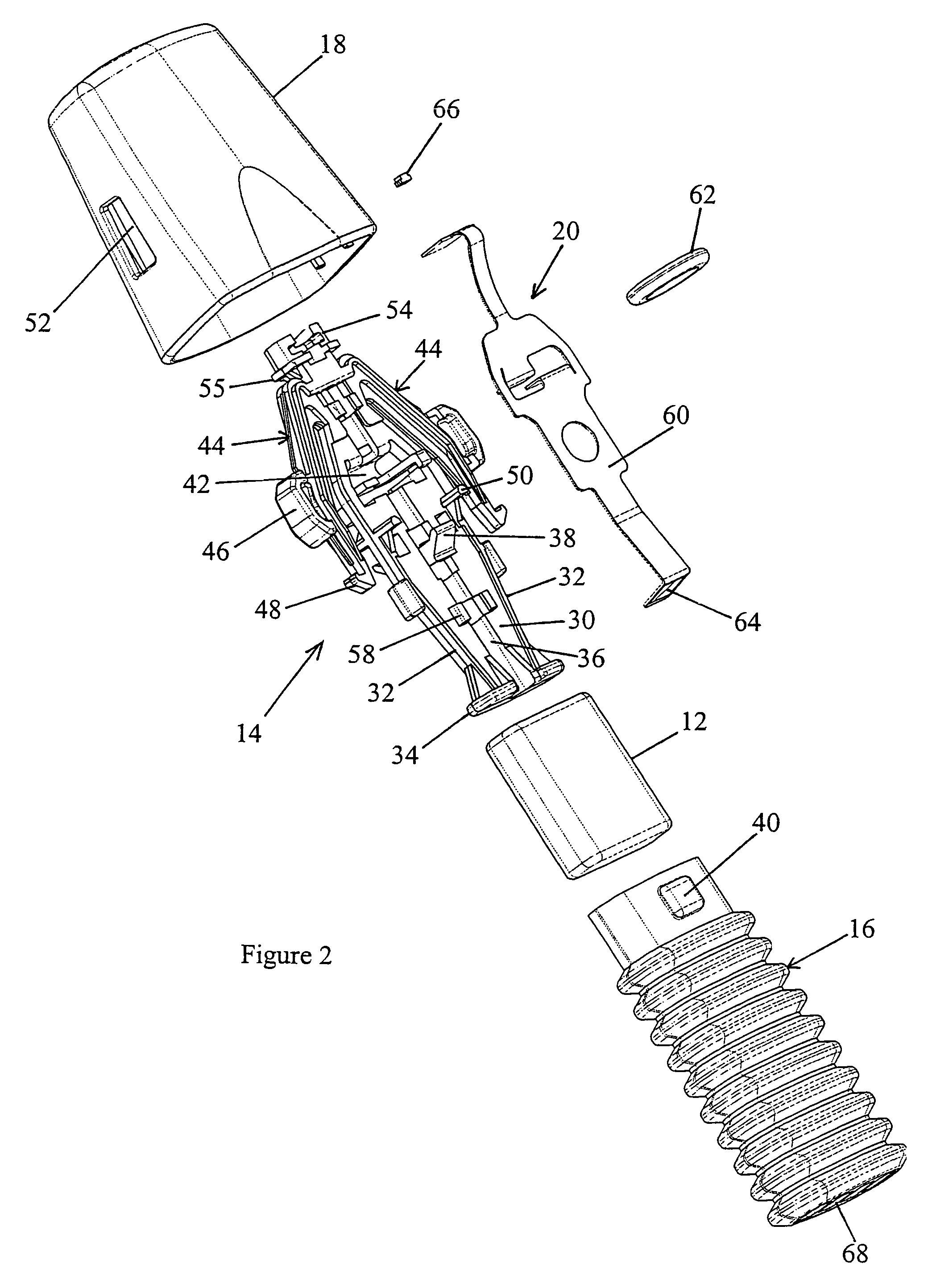Oral fluid collection, transfer and transportation device and method
a technology for fluid collection and transportation, applied in the field of oral fluid collection, transfer and transportation device and method, can solve the problems of affecting the consistency and reliability of testing, difficult to know when an adequate-sized sample has been obtained, and considerable variation in the volume of oral fluid collected, so as to facilitate the use of rechargeable batteries, improve the accuracy and control of fluid collection, and reduce the waste of components in disposable parts
- Summary
- Abstract
- Description
- Claims
- Application Information
AI Technical Summary
Benefits of technology
Problems solved by technology
Method used
Image
Examples
Embodiment Construction
[0037]FIG. 1 shows an assembled collection device 10 provided to collect a sample of fluid from the oral cavity. FIG. 2 is an exploded view of the collection device 10 of FIG. 1 showing its component parts. The collection device 10, which is preferably disposable, comprises a compressible absorbent pad 12 to absorb fluid from the oral cavity, which expands to hold the fluid within its matrix. In the preferred embodiment, the absorbent pad 12 is generally oblong in shape and made from an absorbent foam such as medical grade foam, or cellulose material. It is understood however, that the absorbent pad 12 could be made from other materials and is not restricted to being of a particular form or proportion. The absorbent pad 12 is sufficiently large and absorbent to retain a volume of oral fluid adequate for reliable testing. An adequate volume of oral fluid is considered for the present purpose to be at least 0.6 ml. The fluid capacity of the absorbent pad 12 can be increased or decreas...
PUM
| Property | Measurement | Unit |
|---|---|---|
| volume | aaaaa | aaaaa |
| thick | aaaaa | aaaaa |
| thick | aaaaa | aaaaa |
Abstract
Description
Claims
Application Information
 Login to View More
Login to View More - R&D
- Intellectual Property
- Life Sciences
- Materials
- Tech Scout
- Unparalleled Data Quality
- Higher Quality Content
- 60% Fewer Hallucinations
Browse by: Latest US Patents, China's latest patents, Technical Efficacy Thesaurus, Application Domain, Technology Topic, Popular Technical Reports.
© 2025 PatSnap. All rights reserved.Legal|Privacy policy|Modern Slavery Act Transparency Statement|Sitemap|About US| Contact US: help@patsnap.com



